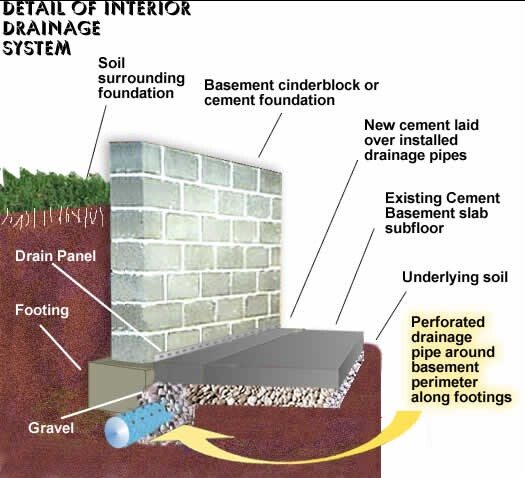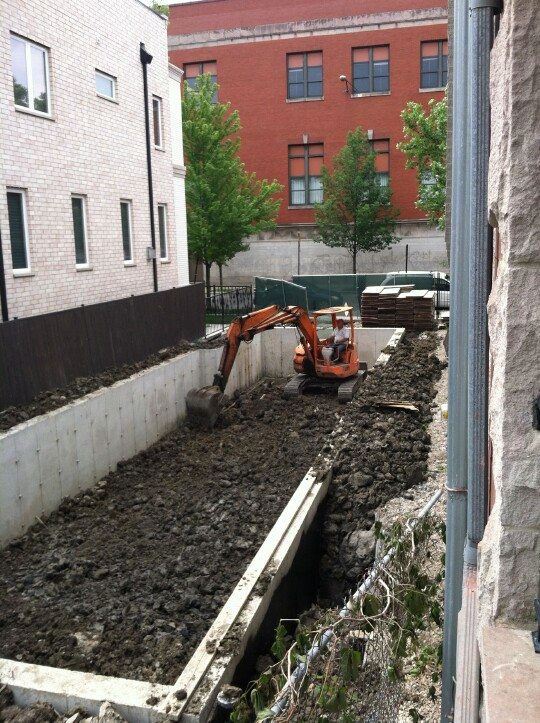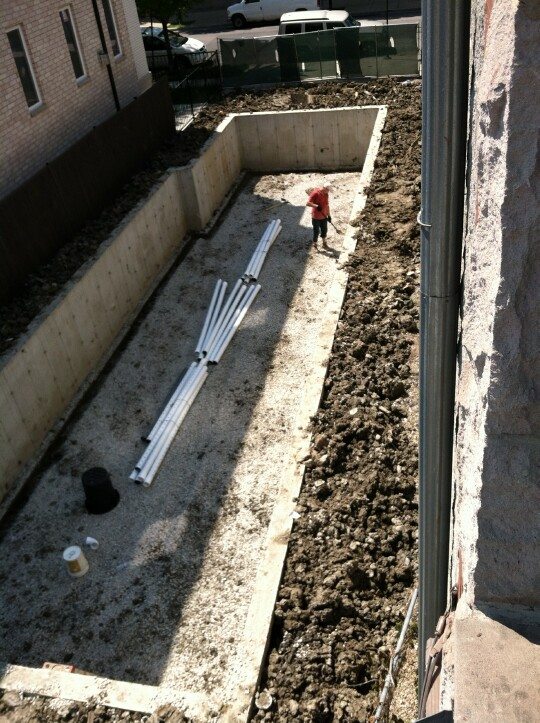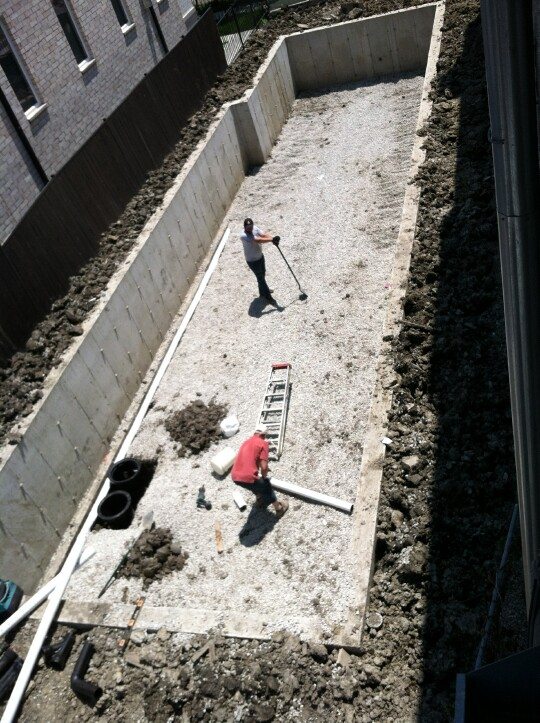Despite the title of this blog post I don’t think there is any such thing as a waterproof basement – only more and less waterproof basements. The reality is that water always goes where it is most welcome (kinda like money) – from wet to dry and from high to low. If there is even the slightest fissure in your basement walls or floor water is going to get in and water is the bane of every homeowner. It destroys everything it touches and creates a welcoming environment for mold.
Go back 50 or more years and people in Chicago didn’t worry too much about waterproof basements because a basement wasn’t really a living area. It was just a place for accessing and storing your home’s guts. As long as it didn’t fill with water you were fine and usually a simple drain or a sump pump in a corner kept it from filling with water.
Then people started converting these basements to recreational areas with modest finishes – maybe some cheap wood-looking paneling, linoleum flooring, and a moveable bar. But eventually the whole movement evolved to the point where now pretty much every new construction home in Chicago has a completely finished basement with carpeting or tile, drywall, nice trim, and filled with nice furnishings and electronics. When your basement looks like this you have to keep all traces of water out.
So the basic waterproofing technique employed by builders involves what’s called a french drain and a sump pump that sit inside the foundation walls and under the basement floor. The diagram below was the best one I could find on the Internet of what I’ve seen done in Chicago to install a system like this, though it appears to demonstrate how you add such a system to an existing basement. However, the concept for new construction is similar. A couple of other differences are that the diagram shows cinderblock walls whereas the basement walls on new construction are usually poured concrete and I suspect that that drain panel relates specifically to a cinderblock construction.
The french drain is that perforated pipe that runs along the perimeter of the basement floor, lying in a trench surrounded by gravel. Water runs down the dirt along the side of the basement walls and then creeps under the footing, filling the gravel trench and the pipe. The pipe feeds into the sump pump that ultimately discharges the water into the sewage system
I found this other photo of a french drain on the Internet. You can see that the pipe is wrapped with some kind of fabric to keep the dirt and small pieces of gravel out of the pipe.
I took the following series of photos of some new construction in my neighborhood to show the various steps in the process. The walls and footing are poured first, without a floor. Then they bring in a backhoe to clear out the center area of any residual dirt, level it out, and fill in the gaps on the outside of the walls. The big question of course is how do you get that backhoe out of the basement? No, you do not convert it into a boiler for the house. I think they use a larger backhoe to lift it out. The only other possibility is to pile dirt up against the back wall of the basement, drive up the ramp, and then dig out the ramp from above. But that would mean that the backhoe is briefly sitting on top of the basement wall, which can’t be good for basement walls.
In this photo you can see that they’ve covered the floor with gravel and dug a trench around the perimeter. The perforated pipe is staged on top of the gravel.
You can see how the pipe is surrounded by gravel in this photo and in the lower left corner you have two pits. One is the sump pump pit where all the water from the french drain is going to go and the other is for the ejector pump, which deals with the basement sewage (that’s for another day). The sump pump only runs intermittently. As the pit slowly fills with water a float valve rises and turns on the pump at a certain level until the water level drops below the cutoff point.
In this photo the french drain is completely covered and the pits are connected to the sewer lines.
But, unfortunately, despite the best laid plans of men this does not guarantee that your basement won’t flood in a heavy rainstorm. There are still other things that can go wrong such as a pump failure, a power failure, or a sewer backup. If the pump or power fails you’re not going to have a working sump pump and the water will fill the sump pit and overflow into the basement in a heavy rainstorm. For that reason I spent around $2000 on a backup system for my own house that utilizes two marine batteries and a second pump. If either or both of the power and the sump pump go out this system kicks in and it can run (intermittently) for a day or two without any power.
Sewer backup is a much trickier and more gruesome proposition. In a heavy rainstorm Chicago’s sewer system has been known to become overwhelmed and backup into people’s basements. Because there is a single system for both stormwater and wastewater (euphemism for raw sewage originating in people’s toilets) a sewer backup into a basement is really bad news. Do I need to spell it out for you?
The only protection against sewer backup is an expensive check valve system or an insurance policy that explicitly covers basement flooding from sewer backup. Your standard homeowner’s insurance policy does not cover this and the damage from just a couple of inches of water could easily run $10,000 exclusive of your furnishings and equipment in the basement. Total damages could be $20,000 – $30,000 or even more. I recently added this to my State Farm insurance policy at a cost of $531/ year for $514,000 of dwelling coverage and $10,000 of contents coverage. Unfortunately, the dwelling coverage is overkill but they don’t offer an intermediate plan.
Such is the cost of living in Chicago.
#WaterproofBasements #SumpPumps
Gary Lucido is the President of Lucid Realty, the Chicago area’s full service discount real estate brokerage. If you want to keep up to date on the Chicago real estate market, get an insider’s view of the seamy underbelly of the real estate industry, or you just think he’s the next Kurt Vonnegut you can Subscribe to Getting Real by Email using the form below. Please be sure to verify your email address when you receive the verification notice.





